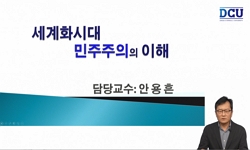헝가리는 1989년 체제전환이후 네 차례의 의회 총선을 실시했으며 민주적 절차에 관한한 투명하고 공정하며 평등하게 실시되었음을 확인할 수 있었다. 세계에서 가장 복잡한 선거법으로 불...
http://chineseinput.net/에서 pinyin(병음)방식으로 중국어를 변환할 수 있습니다.
변환된 중국어를 복사하여 사용하시면 됩니다.
- 中文 을 입력하시려면 zhongwen을 입력하시고 space를누르시면됩니다.
- 北京 을 입력하시려면 beijing을 입력하시고 space를 누르시면 됩니다.

포스트공산시대 헝가리 총선과 정당 정치: 1990∼2002년 = The parliamentary elections and the struggle for power in Hungary: 1990~2002
한글로보기https://www.riss.kr/link?id=A82446295
- 저자
- 발행기관
- 학술지명
- 권호사항
-
발행연도
2002
-
작성언어
-
-
주제어
헝가리 의회 ; 헝가리 총선 ; 헝가리 선거법 ; 정당정치 ; 정당 이념 ; 혼합선거제 절대다수대표제 ; 비례 대표제 ; 양당 체제 ; 봉쇄조항 ; parliamentary election in Hungary ; election system ; mixed-election process ; voting ; MSZP ; SZDSZ ; MDF ; FIDESZ ; Hungarian Politics ; political party
-
KDC
929.005
-
등재정보
KCI등재후보
-
자료형태
학술저널
- 발행기관 URL
-
수록면
480-516(37쪽)
-
KCI 피인용횟수
0
- 제공처
-
0
상세조회 -
0
다운로드
부가정보
국문 초록 (Abstract)
헝가리는 1989년 체제전환이후 네 차례의 의회 총선을 실시했으며 민주적 절차에 관한한 투명하고 공정하며 평등하게 실시되었음을 확인할 수 있었다. 세계에서 가장 복잡한 선거법으로 불리는 헝가리 선거제도는 지역구에서는 절대다수 투표제, 시군별 광역 선거구와 전국구에서는 정당 명부에 의한 비례대표제를 채택하는 혼합 선거제를 채택하고 있다. 이를 보완하기위해 1차 선거와 2차 선거를 채용함으로써 유권자의 투표를 의석 배분으로 가장 정확히 반영하는 것으로 나타났다. 특히 득표율 5%의 봉쇄조항을 통해 원내 정당 난립의 폐해를 효과적으로 방지하고 있다. 1990년 포스트 공산시대 첫 총선과 함께 참여 폭발로 상징되는 정당 난립 현상이 정리되어갔으며 다소 유동적이던 정당의 이념적 스펙트럼도 정립되어 가고 있다. 우선 1990년부터 2002년까지 네 차례의 총선을 거치면서 중소 정당이 원내 진입에 실패해 최초 원내 6개 정당에서 현재 원내 4개 정당으로 정리되었다. 이에 따라 헝가리 정당 정치 구조는 청년민주연합(FIDESZ)가 주도하는 우파 연합과 헝가리사회당(MSZP)이 주도하는 좌파 연합의 양당적 구조로 서서히 변해가고 있다. 특히 포스트 공산시대 이래 계속되어온 사유화 정책의 결과로 헝가리 내에서 신부유층과 서민, 노동자 계층 간의 빈익빈 부익부 현상이 두드러지고 있는 현상이 정당 지지도에서도 뚜렷이 반영되고 있다. 헝가리 정당정치는 이제 예측 가능한 서구 수준의 정당 정치로 변화해갈것이며 2004년 EU가입의 전제 조건도 충분히 충족시킬 수 있는 수준이다.
다국어 초록 (Multilingual Abstract)
The parliamentary elections held in the Republic of Hungary in 1990, 1994, 1998 and 2002 were conducted in a manner consistent with international standards and commitments for democratic elections. The Hungarian election system provide the basis for a...
The parliamentary elections held in the Republic of Hungary in 1990, 1994, 1998 and 2002 were conducted in a manner consistent with international standards and commitments for democratic elections. The Hungarian election system provide the basis for a generally transparent, accountable, free, fair and equal process. Despite some shortcomings, these elections contributed to the further strengthening of the democratic election environment in Hungary The system of representation in the republic of Hungary is a party-based that involves a 3-tiered, mixed election process. 358 members of the Parliament are elected through two rounds of voting. 176 candidates are elected in a single mandate districts. A proportional distribution of 152 seats is based on the votes cast on party list ballots at the county level. A party must win at least 5% of the country list votes aggregated nationwide to be eligible to take part in the distribution of seats. 58 compensatory seats are distributed among national party lists using the unused votes cast for unsuccessful candidates in the district races and surplus votes remaining after applying the formula for distribution of seats elected proportionally among the country lists. After the general election in 2002, Hungary has only 4 parties in our parliament. And finally Hungarian Parliament has the very structure of the two coalition leftists and rightists. The leftists MSZP and SZDSZ won victory and 2 rightists are the FIDESZ and the MDF. FIDESZ was the leader in the last 4 years. These first 2 years was right, but their last 2 year changed to more rightist. MSZP won the party polls, MDF had the biggest function in the election in 1990. At no point has any government since the end of communism survived more than a single term. The 2002 elections were the most divisive since the advent of democracy in 1990. For the first time, people were beating each other in the streets over political issues. Both side pumped up the debate sharply-through their negative ads, through their whispering campaigns. But Hungarian political parties are very inform that this time is a crucial juncture in Hungarian politics, because they will lead Hungary into the European Union.
목차 (Table of Contents)
- 논문 개요
- 1. 문제의 제기
- 2. 헝가리의 선거 제도: 혼합 선거제
- 3. 현대 헝가리의 주요 정당의 형성과 이념
- 4. 헝가리의 역대 총선과 정치 과정(1990?1994?1998?2002)
- 논문 개요
- 1. 문제의 제기
- 2. 헝가리의 선거 제도: 혼합 선거제
- 3. 현대 헝가리의 주요 정당의 형성과 이념
- 4. 헝가리의 역대 총선과 정치 과정(1990?1994?1998?2002)
- 5. 결론:총선을 통해본 헝가리 정당정치의 특징
- 참고 문헌
- Abstract
동일학술지(권/호) 다른 논문
-
헝가리어 비-인칭 동사(személytelen igék)에 대한 연구
- 아시아·중동부유럽학회
- 박수영(Park, Soo-young)
- 2002
- KCI등재후보
-
- 한국동유럽발칸학회
- 한경민(Han
- 2002
- KCI등재후보
-
- 한국동유럽발칸학회
- 오경근(O
- 2002
- KCI등재후보
-
- 아시아·중동부유럽학회
- 최성은(Choi, Sung-eun)
- 2002
- KCI등재후보
분석정보
인용정보 인용지수 설명보기
학술지 이력
| 연월일 | 이력구분 | 이력상세 | 등재구분 |
|---|---|---|---|
| 2016 | 평가예정 | 계속평가 신청대상(신규평가) | |
| 2013-01-24 | 학회명변경 | 한글명 : 한국동유럽발칸학회 -> 아시아중동부유럽학회</br> | |
| 2013-01-01 | 평가 | 학술지 통합(등재유지) | |
| 2010-01-01 | 평가 | 등재 1차 FAIL(등재유지) |  |
| 2008-06-23 | 학술지명변경 | 한글명 : 동유럽발칸학</br>외국어명 : Journal of Central, East European & Balkan Studies |  |
| 2008-01-01 | 평가 | 등재학술지 유지(등재유지) |  |
| 2006-01-16 | 학술지명변경 | 한글명 : 동유럽발칸학</br>외국어명 : Journal of Central, East European & Balkan Studies |  |
| 2006-01-02 | 학술지명변경 | 한글명 : 동유럽발칸학</br>외국어명 : Journal of Central & East European Studies |  |
| 2005-01-10 | 학술지명변경 | 한글명 : 동유럽발칸학</br>외국어명 : Journal of Central & East European Studies |  |
| 2005-01-01 | 평가 | 등재학술지 선정(등재후보2차) |  |
| 2004-01-01 | 평가 | 등재후보 1차 PASS(등재후보1차) |  |
| 2002-01-01 | 평가 | 등재후보학술지 선정(신규평가) |  |




 스콜라
스콜라




